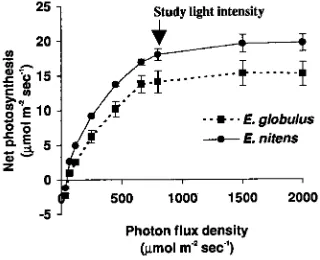Directory UMM :Data Elmu:jurnal:T:Tree Physiology:Vol16.1996:
Teks penuh
Gambar




Dokumen terkait
Changes in leaf net photosynthetic rate ( A) of field-grown ‘‘Golden Delicious’’ apple trees after fruit removal at four stages of fruit development in 1990.. Arrows indicate the
Net uptake rates of N, K, P, Mg, Fe and Mn per unit root growth, dn/dW r (mmol g DW − 1 ), in hydroponically grown birch seed- lings during the phase of steady-state nutrition and
In one group of plants, grown on a homogeneous soil and exposed to mod- erate CO 2 enrichment, isotopic discrimination was signifi- cantly reduced in response to increasing CO 2
Plants grown using soil mulch plus row cover presented higher values of plant biomass, speci®c leaf area (SLA), relative growth rate (RGR), and net assimilation rate (NAR) compared
Effect of temperature treatment and concentration of nutrient solution on length of consecutive internodes on main shoot of Magnolia soulangiana grown in greenhouse (error
In our conditions, the regeneration system, based on shoot formation from very young leaf explants, excised from in vitro-grown plants, allowed the production of a majority of
As the plants entered senescence though, indicated by the decline in leaf chlorophyll at 64 dap, lipid peroxide levels also declined.. By the final stage of senescence (83 dap,
roseus cells to a medium known to induce the production of terpenoid indole alkaloids, an increase in the specific mevalonate kinase activity was observed, reaching a maximum of
